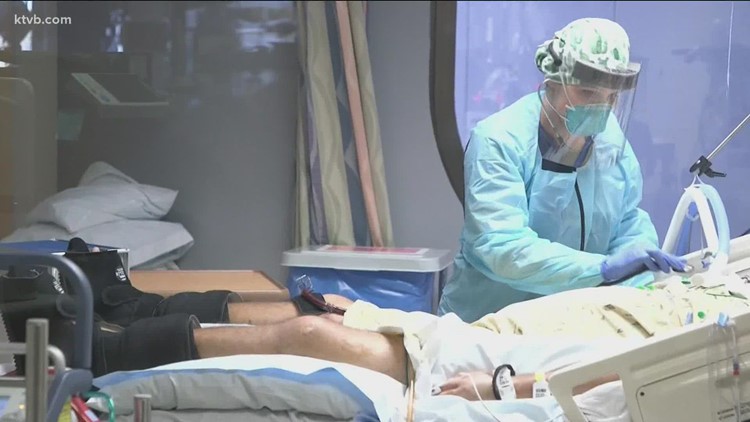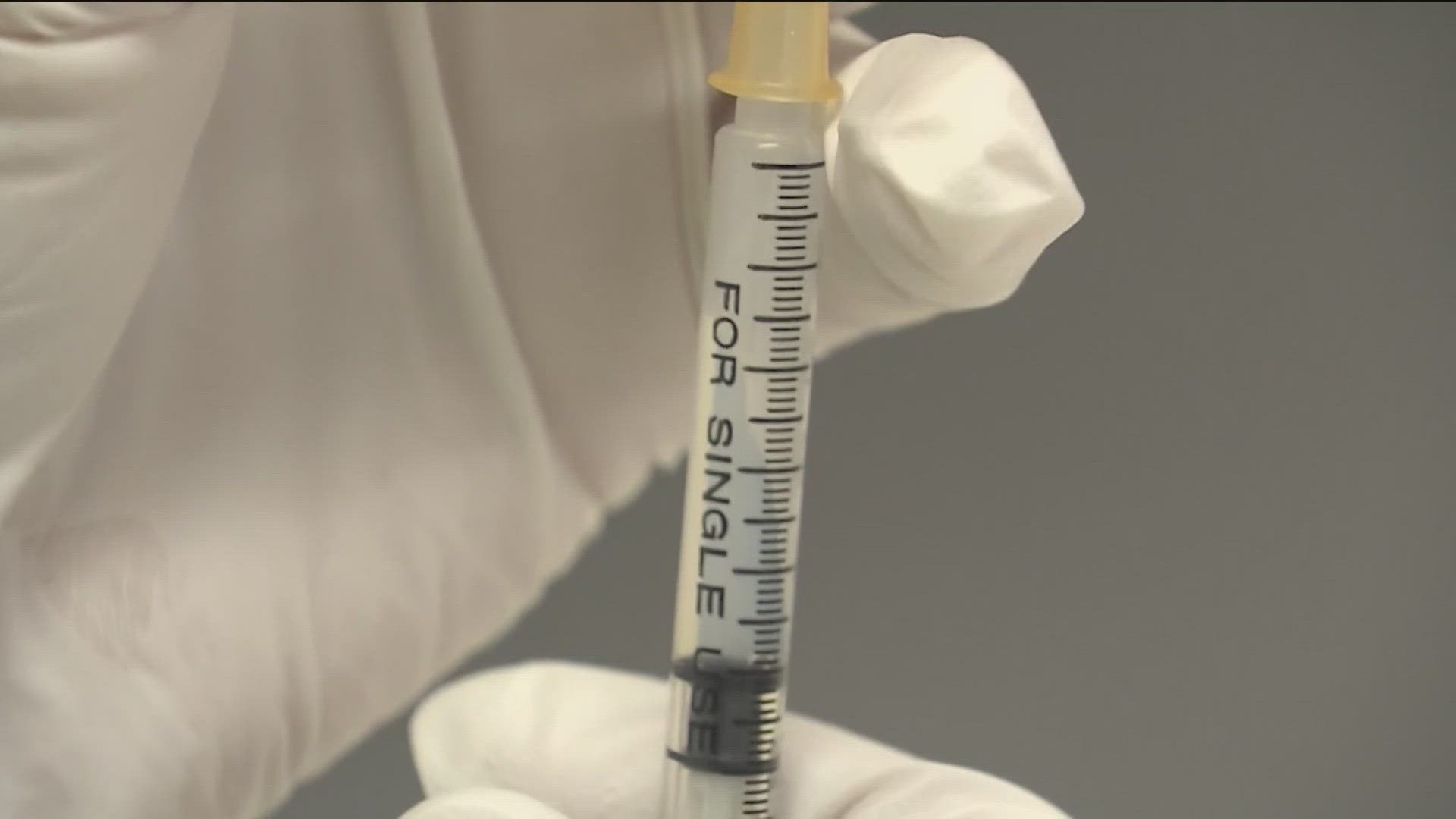BOISE, Idaho — Idaho is in a "race between the virus's biology to try and survive" and the people who've made the choices to protect the state's health care capacity, economy and schoolchildren, Gov. Brad Little said Tuesday in his first AARP telephone town hall in nearly four months.
Idaho Dept. of Health and Welfare Director Dave Jeppesen and Dr. Christine Hahn, epidemiologist and the medical director for the IDHW's Division of Public Health, joined the governor during the noon hour to take questions from callers around the state.
"I guess it's good to be back," Little said, noting that Tuesday's call-in session was the first since May 5. "We had every intention on the last call that that would be our last call, but things change."
After dropping to 3.3 cases per 100,000 population, the statewide incidence rate has rebounded to about 30 cases per 100,000, Jeppesen said.
The most concerning trend, all three officials on the town hall said, is the increasing number of hospitalizations and, particularly in North Idaho, the impact on health care capacity.
Jeppesen said Idaho is "dangerously close" to implementation of crisis standards of care, which would allow hospitals to prioritize who does and doesn't receive care when resources become scarce. In the past, that usually referred to natural disasters. In December 2020, the Idaho Health and Welfare Board approved a temporary rule that would allow hospitals to adopt crisis standards due to a surge in COVID-19 cases, should those cases push hospitals to the point where they can't provide the usual standard.
RELATED: Kootenai Health prepares for 'crisis standards of care' as COVID-19 patients hit record high
"Obviously, the goal is to avoid needing to use crisis standards of care," she said, also saying some measures to avert activation of crisis standards include helping hospitals increase their staffing and possibly transfer patients.
Jeppesen said overall COVID-related hospitalizations are at or near their peak, and the number of COVID patients in intensive care units is higher than at any other time during the pandemic, which hit Idaho in March 2020. The "vast majority" of those patients, Jeppesen said, are unvaccinated.
The big driver of the latest surge in COVID infections and hospitalizations, Jeppesen said, is a "sneaky little variant," referring to the delta variant.
"We've seen it take over as the dominant strain in Idaho over a short period of time," he said. "That's what's causing things to move in the wrong direction."
As of Monday, August 23, the 14-day moving average of new cases in Idaho exceeded 641, a level similar to what the state saw in late January, when cases had begun declining sharply since early December, when the average peaked at nearly 1,500 new daily cases.
The situation now is different from last winter's peak.
Gov. Little said the people most at risk have more protections now, and he indicated that a step back in reopening probably won't happen.
"Never say never and never say always," Little said. "We want people to do the right thing and get vaccinated."
Little also said after looking at models from Britain and from Southern states, he's hopeful that the case numbers will soon go back down.
Hahn said vaccines and treatments, such as monoclonal antibody treatments, are now available, and "keep people from ending up in the hospital."
Idaho officials see hope in the COVID-19 vaccine, which they say is readily available all over the state, but almost all of the patients hospitalized due to the virus had not received.
A caller in her 20s who said she had contracted COVID asked if there were alternative ways for companies that required staff or event attendees to show proof of vaccination or a negative test result to show that they didn't pose a risk.
Jeppesen and Hahn both said even if you've had COVID, go ahead and get the vaccine.
"There are people who have had COVID from the natural process of getting the virus. We do know that provides some level of immunity," Jeppesen said, but then added that the vaccine provides a "much higher level of protection," especially when it comes to new strains of the virus.
"That's one reason we've seen that focus on the vaccination, even for those who have had the virus," he said.
More than 722,000 people in Idaho were fully vaccinated as of August 23, most in the form of a two-dose Pfizer or Moderna series. A third shot, often referred to as a "booster," is now recommended for people with compromised immune systems -- a group that includes people who have had organ transplants or undergone cancer treatment.
Hahn recommended that the immunocompromised consult their doctor or pharmacist now regarding a COVID-19 booster. As for the rest of the vaccine-eligible population, she said booster doses may become available as early as some time in September, with a lag of six to eight months from the time an individual received their initial doses to the time they can receive the booster.
A caller to the town hall noted that when the vaccine rollout began in December 2020, the vaccines were distributed based on priority groups because of limited supply. Hahn said availability shouldn't be a problem when it comes to the booster dose.
"We know the federal government isn't always right, but they have said there will be plenty of booster doses available," Hahn said.
Hesitancy and skepticism about the vaccine persists.
A caller said she heard that there had been "thousands of deaths, thousands of adverse effects," based on reports to the federal Vaccine Adverse Effects Reporting System.
Hahn said VAERS is an "important safety system," but the information included is susceptible to misinterpretation. For example, she said, not every death reported in VAERS is a result of the vaccine.
"What is required of health care providers is to report any adverse events even if they don't necessarily believe or know that it's related to the vaccine," said Hahn, who added that she sees every death certificate related to COVID, including the deceased person's age, underlying conditions, and vaccine status. "Nobody wants to presume one way or the other."
Another reason for skepticism: some people who've been vaccinated - albeit less than one percent - still become ill with COVID.
"Nobody ever said it was 100%. It's kind of a miracle that it's at 90-95%. With delta, we're at around 80 percent," Little said, adding that the chances of hospitalization are 29 times greater for an unvaccinated COVID patient than one who is vaccinated.
"We just need to get more people vaccinated and preserve our health care capacity," he said.
Gov. Little is scheduled to participate in another AARP Idaho COVID-19 telephone town hall on September 15.
Facts not fear: More on coronavirus
See our latest updates in our YouTube playlist:



